Tricks to Remove Stubborn Cooking Oil from Clothes

People who love cooking might wonder how to get cooking and vegetable oil out of clothes quickly and effectively because they encounter oil stains almost every day.
Let’s imagine you grill steaks, sear lamb racks or even fry an egg; there’s a good chance that cooking oil will splatter on your clothes.
Usually, people don’t think about washing it right away because the oil stain doesn’t look terrible, and it doesn’t even seem obvious. However, the oil stains will become darker and darker and leave your shirt unsightly. It is best to handle it early and properly.
With just a few simple tools and products around the house, you can successfully remove cooking and vegetable oil out of your clothes.
But first, read my article to know how to use these things and get valuable information before cleaning.
What’s The Difference Between Cooking Oil and Vegetable Oil?
You might use the term “cooking oil” and “vegetable oil” interchangeably without noticing their differences. Today I would like to highlight some criteria which help you tell them apart. If you’re curious, keep scrolling.
Cooking oil is a generic word for all types of oil which can be used to cook foods, while vegetable oil is just a type of cooking oil.
Cooking oil can be made from plants, synthetic fat, and animals (1). Vegetable oil is extracted from seeds and different parts of the fruit (2).
They’re used in preparing both hot and cold dishes. Keep in mind that those with high flash points can be suitable with different cooking methods such as frying, baking, stir-frying, grilling, sauteing, and more.
Also, cooking oil and vegetable oil is perfect for drizzling over salads, noodles, and pasta or adding to sauces and dips. Vegetable oil, such as olive oil, palm oil, grapeseed oil, can be helpful in promoting hair and skin health.
Vegetable oil tends to add its own unique flavor to the dishes, so if you don’t want its distinctive aroma to overpower other ingredients, choose wisely.
In terms of texture, cooking oil appears bolder and thicker than vegetable oil.
How To Remove Oil Stains From Clothes With Home Remedies
Don’t fret when you have oil stains on your clothes. With several items available in your house, you can create some home remedies that are effective enough to eliminate even stubborn oil stains.
Let’s start a cleaning journey with me right now!
Method 1: Baking Soda
Baking soda is always my number 1 cleaning option because it can soak up oil effectively and leave the stain easier to handle. The same thing happens when tackling tea rings on clothing with it. The best part? You always have baking soda in your house.

What You’ll Need
- Baking soda
- A piece of cardboard
- A clean cloth
- A bucket of hot water
Instructions
Step 1: Place a piece of cardboard under the stain.
Step 2: Blot excess oil with a clean cloth.
Step 3: Cover the stain with baking soda and let it sit for 30 minutes.
Step 4: Immerse your garment into a bucket of hot water and stir several tablespoons of baking soda and let it soak for 30 minutes.
Step 5: Wash as usual.
Method 2: Baking Soda And White Vinegar
These two household ingredients can be an economical cleaning method that is able to fight against cooking and vegetable oil marks on your clothes. Many people have tried and got the expected result. Now it’s your turn.
What You’ll Need
- Baking soda
- White vinegar
- Water
- Paper towel or napkins
- A spoon
- A piece of cardboard
- An old toothbrush
Instructions
Step 1: Use an edge of a spoon to remove any solid food particles on the surface of garments and paper towels or napkins to absorb excess oil.
Step 2: To prevent oil from transferring to another part of your clothes, put a piece of cardboard under the stained area.
Step 3: Cover the stain with a generous amount of baking soda and let it sit for a while. If you’re not short on time, you can allow it to stand overnight.
Step 4: The next day, scrape off all the baking soda and see if the stain has gone.
Step 5: If the stain persists, create a cleaning solution from 1 part of water and 1 part of vinegar in a spraying bottle, shake well and spray it on the stain.
Step 6: Brush the oily stain with a toothbrush. Blot dry with paper towels and napkins.
Step 7: Repeat Step 5 if necessary. After that, wash as usual.

Let’s get cooking oil out of your clothes now!
Method 3: Lestoil Or Pine Sol
Both of them can be found in the laundry detergent section of the supermarket. They work well as a pre-cleaning solution for oil stains on your items.
What You’ll Need
- Lestoil or Pine Sol
Instructions
Step 1: Apply each of them directly on the stains.
Step 2: Wash as usual. Double-check to make sure that lestoil has been removed completely on the surface of your garment after washing. Otherwise, it can attract a new stain.

Method 4: Laundry Detergent
Two factors that determine the success of this method are the cleaning properties of the laundry detergent and the temperature of the water when washing. The warmer the water is, the easier it is to neutralize the oil stain.
Keep in mind that different food marks on clothing require proper cleaning techniques. If the oil stains from your foods containing cheese, like pizzas, this method is for you.
What You’ll Need
- Liquid laundry detergent (preferably enzyme laundry detergent)
- A washing machine with a hot water option
Instructions
Step 1: Apply a good amount of liquid laundry detergent on the stain as a way to pretreat it. It would be best to use enzyme laundry detergent because this type of detergent seems to break down dirty spots more effectively.
If you’re using a new laundry detergent product, make sure you test it first on a small inconspicuous area of your clothes.
Step 2: Use a finger to work it into the fabric and let it stand for 5 minutes.
Step 3: Follow the washing instruction on the care tag and remember to adjust the hottest water cycle your fabric can withstand.

Method 5: Chalk
Chalk is a quick fix when you can’t throw your clothes into the washing machine. It’s a straightforward yet effective way to soak up oil out of your garments. Of course, use white chalk only because colored ones can cause more stains to deal with.
What You’ll Need
- White chalks
Instructions
Step 1: Fill the stain with white chalk. Don’t leave any affected area untouched.
Step 2: Wait for 5-10 minutes so that the chalk can have enough time to soak up the stain.
Step 3: If the stain remains, repeat Step 1.
Step 4: Wash the clothes as normal.

Method 6: Baking Soda And Dishwashing Liquid
Let’s try this powerful combination of baking soda and dishwashing liquid and see how it works on your stained clothes. Baking soda can do more than that.
You can use mild laundry detergent to replace dishwashing liquid and combine it with baking soda. It’s such an effective method for eradicating iron stains on garments you should not miss. . Wait until you hold your items and surprise at their new-like states.
What You’ll Need
- Baking soda
- Dishwashing liquid
- Absorbent towels (White color only)
- A soft-bristled brush
Instructions
Step 1: Don’t forget to blot the stain with absorbent towels to remove excess oil.
Step 2: Sprinkle baking soda all over the need-to-treat spot.
Step 3: Leave it there for up to 1 hour, then scrub gently with a soft-bristled brush.
Step 4: Apply a few drops of dishwashing liquid and slowly dab it into the fabric with a clean towel.
Step 5: Use laundry detergent or ½ cup of white vinegar to wash your clothes in the washing machine as usual. It’s suggested that you wash with water at the highest temperature according to the care tag.

How to get rid of oil stains from your clothes naturally?
Method 7: Hair Shampoo
Hair shampoo is made to clean your greasy hair with just one wash. So, why don’t you try to use it as a cleaning solution for oily pieces of fabric? Luckily, it works magically and brings you the result beyond your expectation.
What You’ll Need
- Hair shampoo
- Paper towels
- An old toothbrush
Instructions
Step 1: Like other homemade remedies, you first need to soak up excess oil with paper towels.
Step 2: Apply shampoo to the stain.
Step 3: Rub gently with an old toothbrush and let it sit for a while.
Step 4: Toss your garments into the washing machine and wash as instructed in the care label.

Method 8: Baby Powder
Like baking soda and chalk, baby powder can absorb excess oil from the stain nicely. This multi-tasker can be helpful in many household tasks rather than preventing diaper rash for babies.
What You’ll Need
- Baby powder
- A spoon
Instructions
Step 1: Add a thick layer of baby powder to the stain.
Step 2: Leave it on the stain for about a day.
Step 3: Use the spoon to scrape off the powder and wash as usual.

Method 9: Hydrogen Peroxide, Baking Soda, And Dish Soap
Besides being used as a disinfectant and antiseptic for the skin, hydrogen peroxide is utilized as oily stain remover. It also appears helpful in eliminating armpit stains and smell from your clothing items. Let’s read on to find out how to use it for the stain you are having.

What You’ll Need:
- Hydrogen peroxide
- Baking soda
- Dish soap
- A toothbrush
Instructions:
Step 1: Use hydrogen peroxide to soak up the stains; after that, pour baking soda to cover them. You should apply the powder generously.
Step 2: Continue to squeeze dish soap on baking soda and gently brush it and wait for 30-60 minutes.
Step 3: Put your clothes with a cleaning solution in your washing machine. Don’t forget to follow the instructions on the clothes tag.
Eliminating Oil Stains From Clothes Based On Types of Fabric
Depending on the material of your clothes, I will suggest a correct way to deal with the oil stain. Keep scrolling for more useful information.
Cotton, Canvas, Linen Clothing
It’s popularly said that the more absorbent the fabric, the better it will clean. Therefore, cotton can be easily restored to its original condition if you tackle the stain as soon as possible.
What You’ll Need
- Heavy-duty liquid laundry detergent or a mixture of powdered detergent and water or pretreatment spray
- Clean, white rag
Instructions
Step 1: Lift the stain with liquid laundry detergent or a mixture of powdered detergent and water or pretreatment spray.
Step 2: Rub the stain gently with a clean, white rag to deepen the cleaning solution into the fabric.
Step 3: Let it sit for several minutes.
Step 4: Wash with the hottest water, which is suitable for your garments. Don’t forget to let them air-dry; check the stains before throwing them into the dryer since heat can make the stains worse.

Washable Chenille, Corduroy Clothing
In terms of removing oil stains, these thick and cozy items might seem challenging to deal with. I think prevention is better than cure, so you should not wear them in the kitchen if possible. Now let’s follow the cleaning guide below to remove unexpected oily marks.
What You’ll Need
- Cornstarch or baby powder
- Pretreatment stain remover
- A brush
Instructions
Step 1: Add a generous amount of cornstarch or baby powder over the stain.
Step 2: Allow it to sit for 5 minutes, then scrub it off with a brush.
Step 3: If the stain doesn’t go away, apply a pretreatment product and wash as normal.
Step 4: Air-dry the clothes and make sure the stain disappears before tossing them in a dryer.

Nylon, Polyester, Spandex, Or Lycra Clothing
The same cleaning rule is applied to nylon, polyester, spandex, or lycra clothing. The sooner you are able to tackle oil stains on them, the better they can be stored to the original condition.
What You’ll Need
- An aerosol pretreatment stain remover
- Liquid laundry detergent
- Chlorine bleach or color-safe bleach
Instructions
Step 1: Apply aerosol pretreatment stain remover on the oily area. Wait at least 1 minute.
Step 2: For stubborn stains, rub the liquid laundry detergent before washing.
Step 3: Wash as usual with the warmest water cycle recommended for your garments.
Step 4: Air-dry the items and check if the stain remains.
Step 5: Wash again using chlorine bleach for white clothes and color-safe bleach for dark-colored items. Should use the hottest water that the fabrics allow.

Leather Clothing
If you’re a fan of leathery items, you might be familiar with saddle soap – a product used for cleaning, conditioning, and protecting this type of material.
In this case, you can utilize this product to remove unwanted stains caused by cooking oil and vegetable oil.
What You’ll Need
- Saddle soap of your choice
- Cornstarch or baking powder
- Leather cleaner and conditioner
- Paper towels
Instructions
Step 1: Blot as much oil as possible with paper towels.
Step 2: Use saddle soap to wipe out the stain.
Step 3: If it doesn’t work, add cornstarch or baking soda over the stain and let it stand overnight.
Step 4: Brush off the powder completely and apply leather cleaner and conditioner as usual.

Suede Clothing
You take good care of your suede jacket because you know this material is hard to clean, but accidentally, it got splattered with cooking oil, and now what do you do?
Here is a step-by-step instruction you could refer to. Let’s find out below.
What You’ll Need
- Ground cornmeal
- A wire brush
- Lemon juice
- A tea kettle
Instructions
Step 1: Again, blot the excess oil remaining on the fabric.
Step 2: Rub ground cornmeal on the oily spot in a circular motion.
Step 3: Shake well to remove the powder. Repeat several times.
Step 4: If the stain is still there, consider rubbing it with lemon juice. Remember to test in a small area to see if lemon juice can harm the fabric or not.
Step 5: After that, heat the stain with steam coming from the tea kettle in a few minutes.
Step 6: Brush gently again with a wire brush.

Silk, Velvet Clothing
Silk and velvet are delicate and luxurious materials which you should handle with care because they are easily damaged. Check out the following method now and share with me your result in the comment section.
What You’ll Need
- Paper towels
- Cornstarch or baking powder
- Dish detergent
- Water
Instructions
Step 1: Blot the excess oil from your garments.
Step 2: Apply cornstarch or baking powder and let it lift the stain slowly. Overnight is best for silk, while you only need 5 minutes for velvet.
Step 3: After scraping off the powder, repeat step 2 if necessary.
Step 4: If the stain is too hard to remove, use dish detergent to break down the greasy particles. Let it sit for about 60 minutes on silk clothes and according to the manufacturer’s instructions with velvet material.
Step 5: Dab the stain with water and blot dry if you handle the silk garment. In terms of velvet, follow the care label to wash it correctly, then air dry.
You can check the stain when the item is still wet. If it doesn’t disappear, avoid putting it in the dryer so that the stain on the clothes could become harder to tackle.

Try this, and your silk items can be new again!
Wool And Cashmere
Wool and cashmere require great attention when wearing, washing, drying, and especially cleaning. To maintain the shape and color of wool and cashmere clothes, you might need to learn how to deal with them appropriately.
Below are some steps to remove oil stains from these special fabrics. Keep reading to find out more.
Non-Washable Wool Or Cashmere
What You’ll Need
- Cornstarch or baking soda
- Laundry detergent
- Water
- Vinegar
- Absorbent clean cloths
Instructions
Step 1: Try to soak up as much oil as possible with absorbent cloth.
Step 2: Apply cornstarch or baking soda all over the stain and let it sit for an hour.
Step 3: Brush off the powder and reapply one more time if needed.
Step 4: To enhance cleaning power, saturate the stain with a mixture of laundry detergent, water, and vinegar.
Step 5: Blot with water and blot dry.
Step 6: Try dry-cleaning solvent if necessary.

Washable Wool Or Cashmere
What You’ll Need:
- Dishwashing liquid
- Cold water
- Sink
- Sheet of paper larger than the sweater
- Cornstarch
- Pencil
- Absorbent towel
Instructions:
Step 1: Sprinkle cornstarch all over the stain. Wait for 30 minutes, then brush it off.
Step 2: If the stain is still there, put the sweater on the sheet of paper you’ve prepared. Draw a line according to the shape of the sweater and let it aside.
Step 3: Drop a few drops of dishwashing liquids and stir gently to mix it with cold water. Avoid creating bubbles.
Step 4: Dip the whole sweater in the sink filled with the mixture. Gently swish it around so that you don’t risk ruining its shape.
Step 5: Leave it to sit for 3 minutes, then pull it out and let the water drip. Don’t wring or twist.
Step 6: Change the water and rinse the sweater. Keep doing this until the water is clean. I guess you might need to do it 10-12 times to get the desired result.
Step 7: Take it out of the sink and let the water drip for a while. Next, spread the sweater over the towel and slowly roll both things up from one end to the other. Doing so will help the towel absorb excess water from the sweater.
Step 8: After that, take the sweater off and place it onto the paper and stretch to restore its original shape.
You shouldn’t miss this guide to clean your washable wool fabric.
Methods To Eradicate Old and Set-in Oil Stains From Clothes
If you accidentally dry stained clothes in the dryer or encounter hard-to-remove oil marks, this section is for you. Let’s find a way to save your favorite items from getting dirty.
Option 1: Remove Set-In Oil Stains With Dawn
No one can deny the cleaning power of Dawn when it comes to removing stubborn grease from your dishes. Therefore, it surely works the same way and removes cooking oil stains on your clothes.
Let’s see!
What You’ll Need
- Dawn liquid dish soap
- A clean white rag
Instructions
Step 1: Wet the stain with clean water.
Step 2: Squirt a few drops of Dawn onto the stain and let it sit for about 10 minutes.
Step 3: Work it into the fabric with a toothbrush or your finger.
Step 4: Dab water to the stain with a clean white rag, then start blotting the oily area.
Step 5: Air-dry the clothes and check the stain to make sure it has gone.
Step 6: If not, repeat the whole process until you get the expected result.

Option 2: Removing Cooking Oil Stains With WD-40
As you might have known, WD-40 is an all-in-one spray that can act as a stain remover, rust remover, degreaser, chimney cleaner, to name a few. In other words, it can remove grease, grimes, and different types of stains.
I’m really excited to try it with hard-to-remove oil stains on my clothes. Let’s start!
What You’ll Need
- WD-40
- Liquid dish soap
- Baking soda
- A piece of cardboard
- A bowl
- Q-tips
- An old toothbrush
Instructions
Step 1: Place a piece of cardboard under the stained area.
Step 2: Spray WD-40 directly on the stain. If the targeted stain is small, you can spray it in a bowl then use Q-tips to apply.
Step 3: Continue to add baking soda to the stain and start scrubbing it with a toothbrush.
Step 4: Dry clumps are formed all over the stain, and you brush them off, then sprinkle more baking soda and keep scrubbing until there are no clumps forming.
Step 5: Apply liquid dish soap on the stain. Rub gently to make it go deeper into the fabric.
Step 6: Wash as usual with the highest water temperature recommended by the manufacturer.
Step 7: Air dry the item.
Let’s remove oil stains from your clothes using WD-40! The result is impressive!
Option 3: Using Oxiclean
Oxiclean also works to remove oil or set-in oil stains on your clothes. This mixture can be used for colored fabric. Let’s see how to do this method:
What You’ll Need:
- Oxiclean
- Water
Instructions:
Step 1: Mix several spoons of Oxiclean with water
Step 2: Soak your clothes in this liquid overnight to break down the stains.
Step 3: Check the stains and wash as usual. If they are removed, let the clothes air dry. Otherwise, repeat or apply other methods.

Getting Rid Of Oil Stains On Dry Clean Only Items
If the care label indicates that your clothes are suitable for dry-clean only, you should leave them for a professional cleaning service rather than risk ruining them.
However, if you’re in a hurry and the oil stain is minor, you can eliminate it at home with some simple household items. Let’s try this below method and remember to proceed with caution:
What You’ll Need
- An old, clean toothbrush
- Baking soda
- Absorbent towels
- Dawn
Instructions
Step 1: Blot excess oil from the clothes with absorbent towels.
Step 2: Apply a thick layer of baking soda on the stain and work it into the fabric with a toothbrush.
Step 3: Let it sit for up to 25 minutes for a better result.
Step 4: Brush off the powder on the surface of the fabric.
Step 5: Apply a drop of Dawn on wet stains, and wait for another 10 minutes.
Step 6: Dab it with clean water.
Step 7: Air-dry it naturally.
Tips For Cleaning Oil Stains With Home Remedies
There are some tips and tricks which make removing oil stains become more accessible and quicker. Let’s learn about them in the following section.
- Several factors decide if your stain is removable or not, for example, how long the stain has appeared, type of cooking or vegetable oil, type of material, and whether the stain has set in.
Deal with your stains as soon as possible. The longer you let them stay, the harder-to-remove they become. Therefore, use baking soda or chalk to pretreat them right at that moment.
- No need to rinse the stained garment under water because it makes no change. The fact that oil doesn’t dissolve in water.
- Powerful dish soap could lift grease stain out of your clothes easily, so make sure you try it.
- For extra cleaning effect, after treating the stain with dish soap or laundry detergent, use hot water to rinse the affected spot, then wash as usual. Keep in mind that this only applies to the fabric which is suitable for cleaning with hot water.
- Last but not least, check the item after washing to make sure the stain has disappeared entirely before using the dryer.
FAQs
I’ve collected a list of some popularly asked questions so that you can consult before starting cleaning oil stains on your clothes. Read on to discover.
Cleaning Oil Stains Is Totally Possible
Oil stains can make people panic because they might not realize their presence until they pull the clothes from the dryer. At this time, these stains have a visibly dark color and can stay with you permanently.
Pay attention to what you’re wearing when you are in the kitchen or near any place where you can catch flying cooking oil easily. Once you notice the oil stain, it should be handled as soon as possible.
Baking soda, chalk, laundry detergent, Dawn – find any cleaning items which I have listed above and use them to pretreat the affected garment.
As long as you don’t take oil stains lightly, you can completely clean them.
What do you think? What’s your favorite method? Share with me your opinions and your cleaning journey in the comment section.


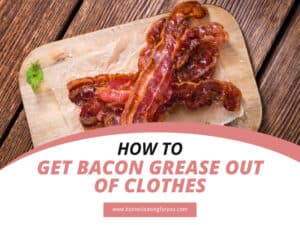
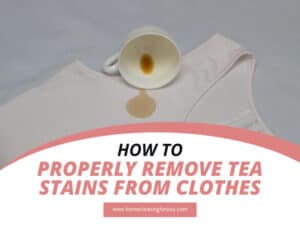
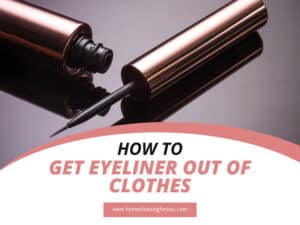

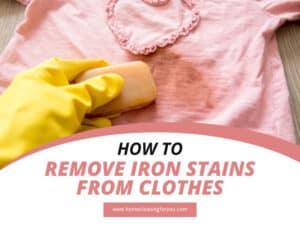
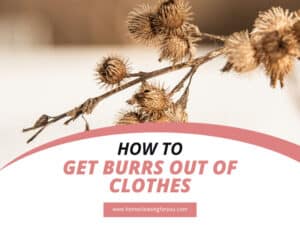
Samantha Lee
Head Cleaning Expert
Expertise
Professional Home Cleaning, Green Cleaning Techniques, Stain Removal & Fabric Care, DIY Home Maintenance & Organization, Sustainable Cleaning Products, Home Care for Busy Lifestyles
Education
University of Denver
Samantha Lee is the Head Cleaning Expert at HomeCleaningForYou.com, specializing in eco-friendly home care. She holds a Bachelor of Science in Environmental Science from the University of Denver, focusing on sustainable cleaning solutions.
With expertise in green cleaning, stain removal, and DIY home maintenance, she helps homeowners keep their spaces fresh and chemical-free. Samantha has been featured in lifestyle publications and has partnered with brands promoting natural cleaning products.
She also shares practical tips through her blog, online courses, and workshops. Passionate about sustainability, she enjoys testing new eco-friendly cleaning methods and spending time outdoors.